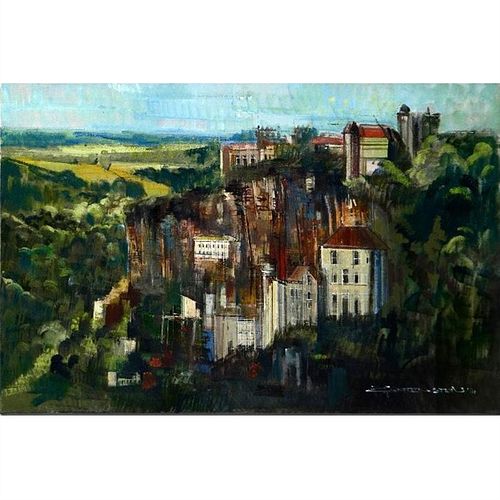Alex Zwarenstein - Rocamadour (France) - Framed, original oil painting on canvas
Lot 341
Estimate:
$22,000 - $30,000
Absentee vs Live bid
Two ways to bid:
- Leave a max absentee bid and the platform will bid on your behalf up to your maximum bid during the live auction.
- Bid live during the auction and your bids will be submitted real-time to the auctioneer.
Bid Increments
| Price | Bid Increment |
|---|---|
| $0 | $5 |
| $100 | $10 |
| $200 | $20 |
| $1,000 | $50 |
| $5,000 | $100 |
| $10,000 | $200 |
About Auction
By Scottsdale Art Exchange
Jul 29, 2023
Set Reminder
2023-07-29 12:00:00
2023-07-29 12:00:00
America/New_York
Bidsquare
Bidsquare : Our Annual Midsummers Day Auction
https://www.bidsquare.com/auctions/scottsdale-art-exchange/our-annual-midsummers-day-auction-13196
This auction will feature 900 amazing items. The Auction will include 300 items for our fine art gallery and over 600 items from our consignment partners. Scottsdale Art Exchange sue@firerockfineart.com
This auction will feature 900 amazing items. The Auction will include 300 items for our fine art gallery and over 600 items from our consignment partners. Scottsdale Art Exchange sue@firerockfineart.com
- Lot Description
Rocamadour (France) by Alex Zwarenstein is a framed, original oil painting on canvas. It is hand signed by the artist! Includes Certificate of Authenticity! Image measures approx. 24 x 36. Framed dimensions are 37 x 49. Gallery Retail Price: $30,000.00. About Rocamadour: Please note an actual photograph of Rocamadour is featured in our listing allowing you to compare the image and this magnificent original Zwarenstein artwork. Rocamadour was a dependency of the abbey of Tulle to the north in the Bas Limousin. The buildings of Rocamadour (from r?ca, cliff, and Saint Amador) rise in stages up the side of a cliff on the right bank of the Alzou, which here runs between rocky walls 120 meters (390 ft) in height. Flights of steps ascend from the lower town to the churches, a group of massive buildings half-way up the cliff. The chief of them is the pilgrimage church of Notre Dame (rebuilt in its present configuration from 1479), containing the cult image at the center of the site's draw, a wooden Black Madonna reputed to have been carved by Saint Amator (Amadour) himself. The small Benedictine community continued to reserve to itself the use of the small twelfth-century church of Saint-Michel, above and to the side. Below, the pilgrimage church opens onto a terrace where pilgrims could assemble, called the Plateau of St Michel, where there is a broken sword said to be a fragment of Durand, once wielded by the hero Roland. The interior walls of the church of St Sauveur are covered, with paintings and inscriptions recalling the pilgrimages of celebrated persons. The subterranean church of St Amadour (1166) extends beneath St Sauveur and contains relics of the saint. On the summit of the cliff stands the chÄżËteau built in the Middle Ages to defend the sanctuaries.
Dimension
Height: 37.00Width: 49.00No issues to reportCondition
- Payment & Auction Policies
-
Available payment options
-
-
- Buyer's Premium



 EUR
EUR CAD
CAD AUD
AUD GBP
GBP MXN
MXN HKD
HKD CNY
CNY MYR
MYR SEK
SEK SGD
SGD CHF
CHF THB
THB




















